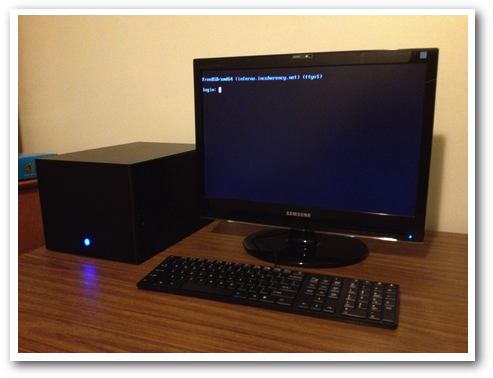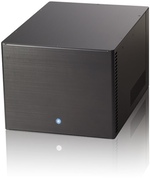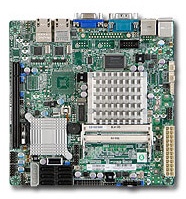Inferno3
The goal was rather simple, take my infinitely useful FreeBSD box and scale it down to more practical metrics. Less space, less energy, no noise. The tool for the job: 10 years of technological progress.
Well, I’m not sure if that was the goal or the excuse, sometimes one simply gets an itch. An urge to integrate new hardware and drag old and reliable but bulky and power hungry hardware to the curb.
Maybe I’m being too specific in the details to label this as a recurring rite… but a good intro is a good intro, I’m sticking with it.
Requirements
I had enough specifics in mind that I’m still a little surprised I was able to satisfy every quirky demand. I wanted an Atom based system for the ideal balance of performance and efficiency. I wanted the system to be as ridiculously compact as 2012 technology would allow.
My first thought was the Asus Eee Box. Their size and cost would have been ideal, but contradicting my small form factor requirement was the desire to migrate my existing mirrored 3.5″ tera-byte drives.
Replacing my storage wouldn’t have been a deal breaker, but as I use the FreeBSD box as my gateway, dual high quality NICs was a must.
What started as a few innocent, curiosity driven Google queries quickly escalated into incurable gadget lust when I stumbled on a Mini-ITX board that looked perfect for the task at hand…
Wait, what’s this? A Mini-ITX case that can hold six (six!) 3.5″ drives and an SSD?!
…and it still maintains a sleek minimalistic design?
…also… silent?
These are some of my favourite attributes… I can’t stop now!
The toys for the job
- Super Micro X7SPA-H-D525
- A pair of 2 GB Kingston KVR800D3S8S6/2G modules
- Fractal Design Array R2 Mini ITX NAS Case
- An Intel 311 Series 20 GB SSD, SSDSA2VP020G201, for the OS – just because.
Results
Two weeks impatiently awaiting the arrival of my backordered board from NCIX (everything else was in stock), some quick assembly, hours of migration work and endless compiling later…
Inferno is now replaced, upgraded to FreeBSD 9.0 and back to his regular duties (including hosting this very site). Everything is running stable and I couldn’t be happier with the difference in power consumption!
The Athlon Thunderbird 850 MHz system this replaced loaded my UPS to 17% of its capacity. This system… Only 2%! Run time estimates on battery backup have gone from just over an hour to over four hours! This kind of difference in power consumption alone probably justifies the exercise. If nothing else, I can now just play the “going green” card.
Even a lowly Atom runs circles around the ancient ol’ T-Bird. All else being equal, how can you go wrong with more clock speed, an extra core and Hyper-threading?
To summarize: everything went according to my diabolical plan. Let’s see if I can run on this for the next decade.


